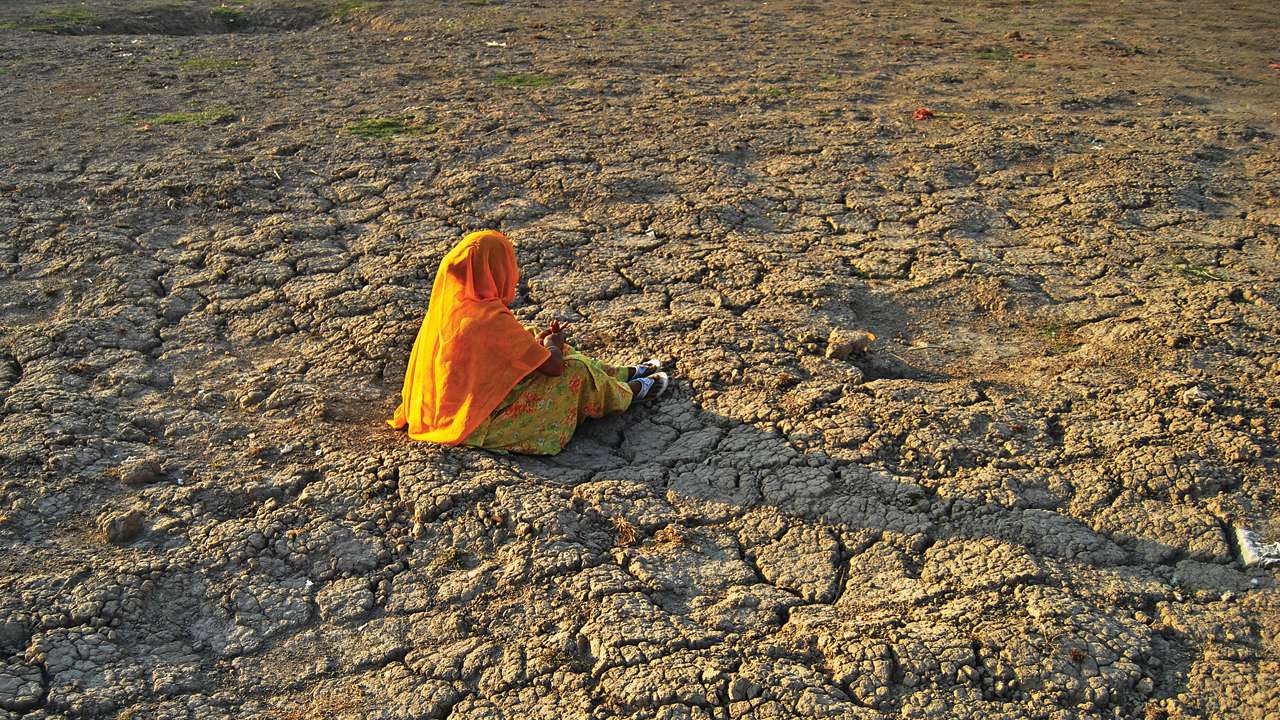
The impact of drought on women farmers remains unregistered by the state, which considers them only in their non-farm roles in rural households and village communities. The new drought relief manual is no different as it merely provides an alibi for the state to abdicate its responsibility towards farm crises and utilises gender to reduce its intervention in agriculture by addressing only one half of the population.
Drought is never too far in a country like India, which has an inadequate irrigation system and low public investment in agriculture. About half of all the cropped area in the country is rain-fed and supports almost 40 percent of the population. In 2015-16, over 266 districts in 11 states reported drought conditions and sought relief. Given the scale of the crisis, the role of the state in saving the lives of farmers and their families across the country cannot be understated. It is necessary, therefore, to examine factors that deliberately minimise this important responsibility of the state, especially towards women farmers.
The new Manual for Drought Management by the Ministry of Agriculture and Farmers Welfare, used for the first time this year to identify affected areas in Maharashtra, demonstrated how the assessment of severity of drought would now be more stringent and difficult to prove. In effect, instead of measures to prevent the occurrence of drought, the state appears to have taken steps to prevent identification of drought itself. Such approach has a negative multiplier effect on women farmers, habitually neglected by state and society. This view is only reinforced in the manual’s approach to ‘fix’ women in pre-decided categories based on their social and patriarchal roles.
While using terms like ‘extremely distressed’ to describe the condition of women during drought, the manual deals with them as dependents in a household rather than the women on whom the household depends for income through their unregistered labour.
Ironically, even as the manual uses advanced technology to decide drought, it is reluctant to apply a gendered approach towards relief. Predictably, drought relief for women is seen in the framework of nutrition, health and childcare. For instance, for ascertaining drought, the manual follows four indices of rainfall, remote sensing based vegetation, crop situation and hydrological data, that necessitates coordination with about a dozen or more agencies/ministries of state and central government. The detailed parameters monitor dry spell during the crop-growing period, water availability in reservoirs, crop vigour, among others. The manual envisages to achieve this through support from organisations like ISRO, IMD, etc. Such precision and knowledge, however, have not been used to explore the impact of drought on women who work on their own farms and as farm labour.
The jargonised intent of the state is expected to balance its lack of interest in gendering relief. On page 60, the manual states that the district administration must ‘strive to provide employment to all the able-bodied adult, men and women, and there cannot be any discrimination in the provision of relief…’ There is, however, no suggestion on how to prevent such discrimination. Without such measures, the manual merely shows state’s intent and not its determination to facilitate the equal right to work for women farmers.
On page 116, the manual identifies women as the ‘most affected’ in a drought situation and recommends that they plan ‘several measures’ to ‘reduce their hardships’ through the equitable management of natural resources. While community-based solutions are suggested for mitigation and relief, the same are not proposed for women farmers and farm labour. Without addressing such aspects, not only income but the survival of rural households would continue to be severely distressed during drought.
Food security through self-help-groups and community kitchens during drought have been recommended to provide adequate nutrition to and ensure good health of the elderly, disabled, women and children. In reality, and irrespective of drought, within a rural household a majority of farm women take care of the elderly, the disabled and the children. Women in rural areas are expected to play this role as their duty, along with their other responsibilities of working on fields as farm labour. The manual does not recognize this factor as an additional burden on the women farmers.
On page 121, the manual states that the women bear a ‘disproportionate share of the consequences of drought’ and urges that a mitigation strategy should be made in consultation with self-help-groups. It states that it would be ‘fruitful’ to initiate an ‘active dialogue’ with the groups. Once again, the jargonized intent of the state replaces steps that should have been taken to make it necessary for such manuals to include the suggestions of women groups before their compilation. The separation of the women farmers’ experience from such exercise appears to be based on the state’s assumption that the findings need not be considered in policy. The state must desist from such generalizations, which lead to lop-sided solutions towards farm crisis of all kinds.
The state cannot restrain itself to the perceptional frameworks of gender when dealing with farm crises. For instance, water is gendered; irrigation is considered male domain while drinking water is a female domain. The reality, however, is different and has not improved the state’s perspective. As women work on the fields alongside men, and for longer periods than men, it is women farmers who must bear the brunt of drought due to reduced rainfall or inadequate irrigation. By allocating distress in the binary of gender, the state further withdraws from solutions that it can and should provide to women farmers and farm labour.
The writer is an author and research scholar. Her next book, Widows of Vidarbha, Making of Shadows, will be published in 2018. Views expressed are personal.